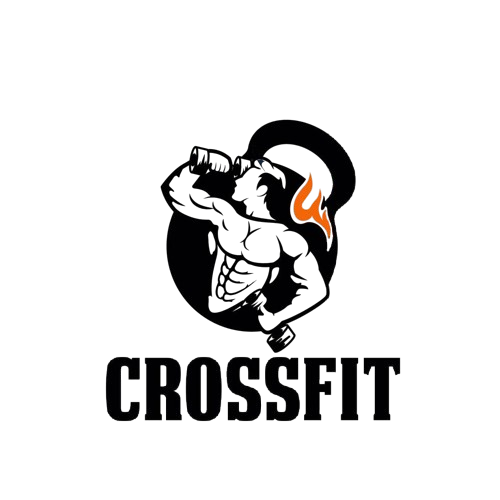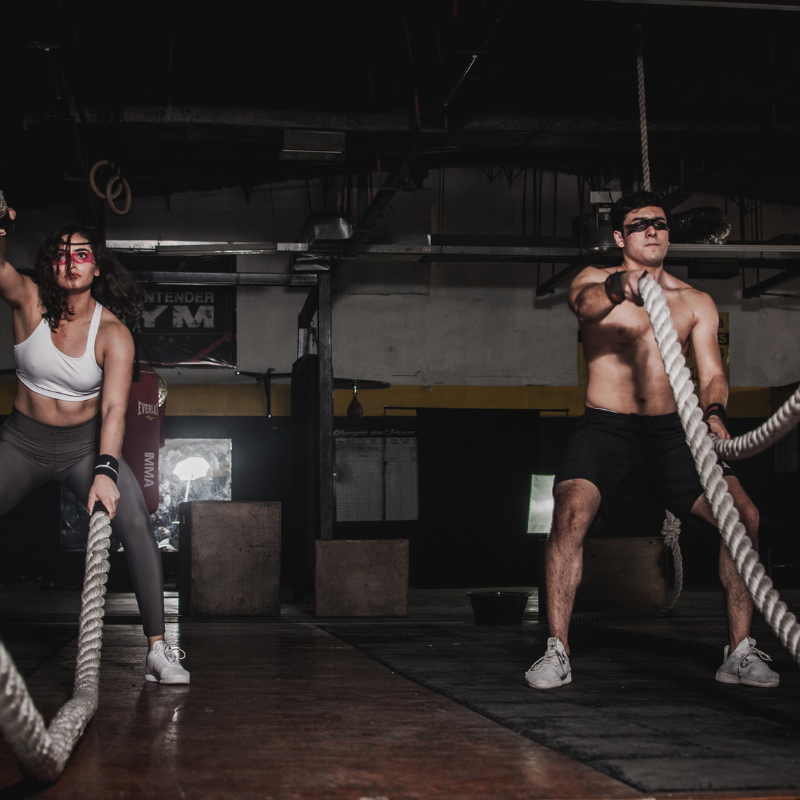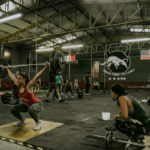Embarking on a CrossFit journey at home can seem daunting, yet it’s entirely possible with the right guidance. This article will show you how to replicate the intensity and variety of a CrossFit gym experience in the comfort of your own home. Whether you’re a seasoned athlete or a fitness novice, discover how to safely and effectively integrate CrossFit into your routine, maximize your workouts, and achieve your fitness goals without stepping foot outside your door.
Setting Up Your Home Gym
Embarking on a CrossFit journey from the comfort of your home begins with creating a space that is both motivating and functional. The first step is to designate an area specifically for your workouts. This doesn’t necessarily require a large space; a small room or a section of your garage can suffice, as long as it’s free from clutter and distractions. The essence of CrossFit revolves around varied, high-intensity, functional movements, so your home gym should cater to this diversity.
Investing in the right equipment is crucial. While CrossFit is known for its adaptability and minimal equipment workouts, having key pieces can greatly enhance your training experience and effectiveness. Start with the basics: a good quality barbell, a set of bumper plates, and a pull-up bar. These items will allow you to perform a wide range of workouts and are considered the backbone of CrossFit training. Additionally, consider space-saving solutions such as collapsible squat racks or adjustable weight benches to maintain the versatility of your training area.
Lastly, ensure your space is equipped with adequate flooring. Rubber mats or interlocking foam tiles can protect both your equipment and your floor, and provide a safer surface for lifting and high-impact exercises. With your area set up, you’re ready to embark on your CrossFit journey at home, pushing your limits in a space that’s uniquely yours.
| Equipment | Function | Space Requirement |
|---|---|---|
| Barbell | Weightlifting, Powerlifting | 6×2 feet |
| Bumper Plates | Weightlifting, Deadlifts, Squats | Variable |
| Pull-Up Bar | Upper Body Strength | Wall space |
| Rubber Mats | Floor Protection, Safer Workouts | Dependent on designated area size |
| Adjustable Bench | Weightlifting, Bodyweight Exercises | 3×6 feet |
Creating Your Personal CrossFit Gym at Home
Finding the motivation to hit the gym can be tough, but the convenience of a home setup for CrossFit can make your fitness journey both enjoyable and accessible. To start, identify a dedicated space in your home where you can move freely and safely. This doesn’t have to be a large area; a small garage or an empty room can serve perfectly as your workout zone. The key is to ensure enough space for dynamic movements that are typical in CrossFit routines.
Next, investing in the right equipment is crucial. Begin with the basics: a high-quality jump rope, a set of dumbbells, kettlebells, a medicine ball, and a pull-up bar. These tools are versatile and can support a wide range of CrossFit workouts. As you progress, you may consider adding more specialized equipment, such as a barbell with bumper plates and a rowing machine, to diversify your training and challenge your body in new ways.
Designing your CrossFit routine requires careful consideration. Start by incorporating a mix of cardiovascular exercises, weightlifting, and high-intensity interval training (HIIT). Plan your workouts in advance, ensuring a balanced approach that targets different muscle groups and includes adequate rest days. Remember, the goal is to improve your overall fitness – strength, agility, and endurance – so variety and consistency are key.
Additional insights into setting up a CrossFit gym at home underline the importance of creating a motivating and safe environment. Proper flooring, such as rubber mats, can protect your floors and provide the necessary cushioning for high-impact activities. Adequate lighting and ventilation are also essential to keep the space comfortable and inviting.
| Equipment | Function | Recommended for Beginners |
|---|---|---|
| Jump Rope | Cardiovascular Fitness | Yes |
| Dumbbells | Strength Training | Yes |
| Kettlebells | Power & Flexibility | Yes |
| Medicine Ball | Core Stability | Yes |
| Pull-up Bar | Upper Body Strength | Optional |
Essential CrossFit Equipment List
Embarking on your CrossFit journey from the comfort of your home necessitates a tailored approach to equipment selection. Unlike the vast array of machines found in a commercial gym, your home setup will focus on versatility, efficiency, and space conservation. Here, we delve into the cornerstone pieces that will empower your CrossFit workouts, ensuring a comprehensive fitness regimen without stepping outside your door.
At the heart of any CrossFit equipment list is the barbell. A quintessential tool, the barbell’s adaptability for strength training, Olympic weightlifting, and powerlifting segments it as a non-negotiable item. Accompanying this, a set of bumper plates provides the necessary resistance while being gentle on home flooring. Select plates of various weights to progress and diversify your workout intensity.
Next, a pull-up bar or rig stands as a testament to CrossFit’s emphasis on bodyweight exercises. Whether it’s pull-ups, chin-ups, or muscle-ups, this apparatus supports a multitude of upper body strengthening routines. To complement this, consider incorporating kettlebells and dumbbells, which offer unmatched flexibility for both unilateral and bilateral exercises, enhancing your functional strength and conditioning.
Lastly, the inclusion of a jump rope and plyometric box can significantly elevate your cardiovascular fitness and explosive power. These items facilitate high-intensity interval training (HIIT) sessions and plyometric exercises, crucial components of the CrossFit methodology. By integrating these tools into your regimen, you can achieve a balanced blend of endurance, strength, and agility workouts.
Optimizing Your Space and Budget for CrossFit Equipment
When assembling your home CrossFit gym, spatial and financial considerations are paramount. Opt for equipment that offers the greatest utility per square foot and aligns with your budgetary constraints. Multi-functional items like adjustable dumbbells can substitute an entire rack of weights, saving both space and money. Similarly, collapsible or wall-mounted rigs provide the functionality of a full gym setup without permanently occupying valuable floor space.
| Equipment | Function | Space Efficiency |
|---|---|---|
| Barbell and Bumper Plates | Strength Training | High |
| Pull-up Bar/Rig | Upper Body Conditioning | Medium |
| Kettlebells | Versatile Strength and Conditioning | High |
| Dumbbells | Functional Strength | High |
| Jump Rope | Cardiovascular Fitness | Very High |
Assembling your essential CrossFit equipment list is the first step towards a successful home fitness regime. It’s not merely about purchasing gear but about creating a functional space that inspires and motivates. Consideration of each piece’s utility, along with how it fits into your personal fitness goals, space, and budget, will ensure that your home gym caters to a broad spectrum of workouts. This strategic approach will lay a solid foundation for your CrossFit journey, ensuring that you maximize every square inch of your home gym for optimal training efficiency.
Designing Your CrossFit Workout Plan
Creating an effective CrossFit workout plan at home requires a strategic approach to balance intensity, variety, and recovery. Initially, it’s essential to understand the core components of CrossFit: strength training, conditioning, and skill development. By incorporating elements from each category, you can design a well-rounded routine that promotes overall fitness improvement.
To start, establish your fitness goals and assess your current skill level. This assessment will guide the selection of exercises, helping to ensure they are both challenging and achievable. Incorporate a mix of high-intensity interval training (HIIT), weightlifting, plyometrics, and gymnastics movements to mirror the diversity of CrossFit. Each workout should aim to push your boundaries, yet be scaled to match your capabilities.
Recovery is as crucial as the workouts themselves. Allocate rest days within your plan to allow your body to recuperate. This balance prevents injury and aids in muscle growth. To monitor progress, periodically reassess your performance and adjust the difficulty of your workouts accordingly. This dynamic approach ensures continuous improvement and helps maintain motivation.
| Day | Focus | Sample Exercise |
|---|---|---|
| Monday | Strength | Back Squats |
| Wednesday | Conditioning | 200m Sprints |
| Friday | Skill | Handstand Push-ups |
| Saturday | Mixed | AMRAP 20 mins: 5 Pull-ups, 10 Push-ups, 15 Squats |
| Sunday | Rest | N/A |
When designing your CrossFit workout plan at home, remember that consistency and adaptability are key. Your plan should evolve with your fitness level, incorporating new skills and challenges to avoid plateaus. Additionally, investing in minimal equipment, like kettlebells and jump ropes, can enhance your training variety without requiring a full home gym. Lastly, consider engaging with the online CrossFit community for support, inspiration, and accountability. By following these guidelines, you can create an effective and sustainable home CrossFit routine that fosters physical and mental growth.
Incorporating Bodyweight Exercises
When embarking on a CrossFit journey from the comfort of your home, bodyweight exercises are a cornerstone, offering a versatile, accessible, and highly effective way to build strength, endurance, and agility. These exercises leverage your own body’s weight as resistance, making them ideal for a home environment where specialized equipment might not be available. From push-ups to squats and burpees, each movement can be modified to suit your fitness level, ensuring a progressive and challenging workout regimen.
One of the key advantages of bodyweight exercises is their ability to improve functional strength, enhancing your ability to perform everyday activities with greater ease. Moreover, incorporating bodyweight movements into your CrossFit routine promotes improved body awareness and coordination. By focusing on compound movements that engage multiple muscle groups simultaneously, you can achieve a comprehensive workout that stimulates cardiovascular health, muscle development, and fat loss.
Another significant benefit is the flexibility these exercises offer. Without the need for equipment, your CrossFit routine becomes highly adaptable and portable. Whether you’re in a small apartment, a backyard, or on the go, you can maintain your fitness regimen, making it easier to stay consistent and reach your fitness goals.
Optimizing Your Bodyweight Workout
To maximize the benefits of bodyweight exercises in your CrossFit regimen, consider incorporating high-intensity interval training (HIIT) principles. This approach alternates between periods of intense activity and short recovery periods, effectively boosting your metabolic rate and enhancing endurance. Tailoring the intensity and volume of exercises to your current fitness level ensures a sustainable and progressively challenging workout experience.
| Exercise | Reps | Notes |
|---|---|---|
| Push-ups | 15-20 | Keep back straight |
| Squats | 20-25 | Weight on heels |
| Burpees | 10-15 | Full body exercise |
| Planks | 1 min | Engage core |
| Mountain Climbers | 30 sec fast | Knees to chest |
Safety Tips for Home Workouts
Embarking on a CrossFit journey at home can be both exhilarating and challenging. Ensuring your safety during these intense workouts is paramount. First and foremost, allocate a dedicated space for your workouts. This area should be clear of any obstacles that could pose a risk of injury, such as furniture or loose rugs. The surface you choose to exercise on must provide adequate support and grip to prevent slips and falls.
Next, it’s crucial to listen to your body. While pushing your limits is part of the CrossFit ethos, recognizing the difference between pushing yourself and pushing yourself too far is vital. Start with lower intensity and gradually increase it as your strength and endurance improve. Also, incorporating a thorough warm-up and cool-down into your routine can significantly reduce the risk of injury.
Finally, investing in quality equipment is non-negotiable. Whether it’s resistance bands, weights, or a pull-up bar, ensuring they are of high quality and in good working condition can prevent accidents. Additionally, familiarizing yourself with the correct form and technique for each exercise can not only enhance your performance but also minimize the risk of injuries.
Optimizing Your Home Workout Space
Creating an optimal environment for CrossFit workouts at home goes beyond safety and extends into enhancing your overall performance. Adequate lighting, ventilation, and even the psychological impact of a dedicated space can significantly affect your workout quality and motivation. Tailoring your workout area to meet these needs can make your CrossFit journey safer and more enjoyable.
| Tip | Reason | Benefit |
|---|---|---|
| Dedicated Space | Prevents accidents | Increases safety |
| Quality Equipment | Ensures reliability | Reduces risk of injury |
| Correct Form | Improves efficiency | Enhances performance |
| Listen to Your Body | Avoids overtraining | Promotes longevity |
| Warm-Up/Cool-Down | Prepares and recovers muscles | Decreases injury chances |
Tracking Your CrossFit Progress
One of the most critical aspects of any fitness regimen, especially CrossFit, is tracking your progress. It’s not just about pushing your limits in every workout; it’s also about seeing how far you’ve come, understanding your strengths and weaknesses, and setting realistic goals for the future. By keeping an accurate record of your workouts, times, and scores, you can see patterns in your performance, identify areas for improvement, and celebrate your achievements.
To effectively track your CrossFit progress, start by maintaining a detailed workout journal. Document the specifics of each workout, including the type of exercises, the weights lifted, and your overall time or score. Additionally, note any modifications or assistance used during the workout. This level of detail will provide a comprehensive view of your performance over time.
Another crucial component is setting benchmarks and conducting regular fitness assessments. These can include standardized workouts or specific exercises that test various aspects of your fitness, such as strength, endurance, and agility. Revisiting these benchmarks periodically will give you a clear indication of your progress and areas that may need more focus.
| Date | Workout Description | Score/Time |
|---|---|---|
| 01/01/2023 | 20 AMRAP: 10 pull-ups, 15 push-ups, 20 squats | 5 Rounds |
| 02/01/2023 | 5 RFT: 400m run, 15 clean and jerks | 22:35 |
| 03/01/2023 | 1RM Deadlift | 405 lbs |
| 04/01/2023 | 3 RFT: 500m row, 12 burpees, 21 box jumps | 18:47 |
| 05/01/2023 | Tabata: Sit-ups, Squats, Push-ups, Rows | 8 Rounds |
Tracking your CrossFit progress is not just about numbers and scores; it’s about personal growth, overcoming challenges, and celebrating every victory, no matter how small. It encourages a mindset of continuous improvement and helps to cultivate a deeper connection with your fitness journey. By being diligent and consistent with your tracking, you’ll not only witness your physical transformation but also gain insights into your mental resilience and determination.
As you integrate these practices into your CrossFit training at home, remember that progress is a journey, not a destination. Celebrate every step forward, learn from setbacks, and always strive for a better version of yourself. With dedication, consistency, and a rigorous track of your progress, you’re setting the stage for unparalleled personal growth and success in your fitness goals.
In conclusion, the path to mastering CrossFit at home is paved with dedication, hard work, and a consistent effort to track and understand your progress. As you move forward, let the data you gather be your guide, your motivation, and a testament to the strides you’re making every day. Here’s to pushing boundaries, setting new benchmarks, and achieving the extraordinary.







